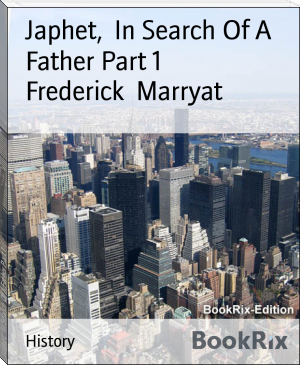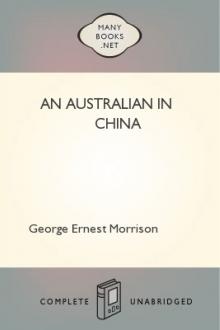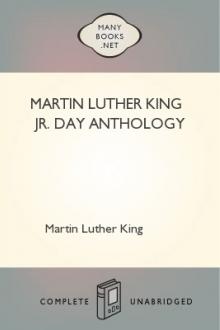The Origin of the Family Private Property and the State by Frederick Engels (classic novels .txt) 📕

- Author: Frederick Engels
- Performer: -
Book online «The Origin of the Family Private Property and the State by Frederick Engels (classic novels .txt) 📕». Author Frederick Engels
And if strict monogamy is the height of virtue, then the palm belongs to the tapeworm that carries a complete male and female sexual apparatus in each of its 50 to 200 sections and passes its whole lifetime in fertilizing itself in every one of its sections. But if we confine ourselves to mammals, we find all forms of sexual intercourse, license, suggestions of group marriage, polygamy and monogamy. Only polyandry is missing;[8] that could be accomplished by men only. Even our next relations, the quadrumana, exhibit all possible differences in the grouping of males and females. And if we draw the line still closer and consider only the four anthropoid apes, Letourneau can only tell us, that they are now monogamous, now polygamous; while Saussure contends according to Giraud-Teulon that they are monogamous. The recent contentions of Westermarck[9] in regard to monogamy among anthropoid apes are far from proving anything. In short, the information is such that honest Letourneau admits: "There exists no strict relation at all between the degree of intellectual development and the form of sexual intercourse among mammals." And Espinas says frankly:[10] "The herd is the highest social group found among animals. It seems to be composed of families, but from the outset the family and the herd are antagonistic; they develop in directly opposite ratio."
It is evident from the above that we know next to nothing of the family and other social groups of anthropoid apes; the reports are directly contradictory. How full of contradiction, how much in need of critical scrutiny and research are the reports even on savage human tribes! But monkey tribes are far more difficult to observe than human tribes. For the present, therefore, we must decline all final conclusions from such absolutely unreliable reports.
The quotation from Espinas, however, offers a better clue. Among higher animals, the herd and family are not supplements of one another, but antitheses. Espinas demonstrates very nicely, how the jealousy of the males loosens or temporarily dissolves every herd during mating time. "Where the family is closely organized, herds are formed only in exceptional cases. But wherever free sexual intercourse or polygamy are existing, the herd appears almost spontaneously.... In order that a herd may form, family ties must be loosened and the individual be free. For this reason we so rarely find organized herds among birds.... Among mammals, however, we find groups organized after a fashion, just because here the individual is not merged in the family.... The rising sense of cohesion in a herd cannot, therefore, have a greater enemy than the consciousness of family ties. Let us not shrink from pronouncing it: the development of a higher form of society than the family can be due only to the fact that it admitted families which had undergone a thorough change. This does not exclude the possibility that these same families were thus enabled to reorganize later on under infinitely more favorable circumstances."[11]
It becomes apparent from this, that animal societies may indeed have a certain value in drawing conclusions in regard to human life—but only negatively. The higher vertebrate knows, so far as we may ascertain, only two forms of the family: polygamy or pairs. In both of them there is only one grown male, only one husband. The jealousy of the male, at the same time tie and limit of the family, creates an opposition between the animal family and the herd. The latter, a higher social form, is here rendered impossible, there loosened or dissolved during mating time, and at best hindered in its development by the jealousy of the male. This in itself is sufficient proof that the animal family and primeval human society are irreconcilable; that ancient man, struggling upward from the animal stage, either had no family at all or at the most one that does not exist among animals. A being so defenceless as evolving man might well survive in small numbers though living in an isolated state, the highest social form of which is that of pairs such as Westermarck, relying on hunter's reports, attributes to the gorilla and the chimpanzee. Another element is necessary for the elevation out of the animal stage, for the realization of the highest progress found in nature: the replacing of the defencelessness of the single individual by the united strength and co-operation of the whole herd. The transition from beast to man out of conditions of the sort under which the anthropoid apes are living to-day would be absolutely unexplainable. These apes rather give the impression of stray sidelines gradually approaching extinction, and at all events in process of decline. This alone is sufficient to reject all parallels between their family forms and those of primeval man. But mutual tolerance of the grown males, freedom from jealousy, was the first condition for the formation of such large and permanent groups, within which alone the transformation from beast to man could be accomplished. And indeed, what do we find to be the most ancient and original form of the family, undeniably traceable by history and even found to-day here and there? The group marriage, that form in which whole groups of men and whole groups of women mutually belong to one another, leaving only small scope for jealousy. And furthermore we find at a later stage the exceptional form of polyandry which still more supersedes all sentiments of jealousy and hence is unknown to animals.
But all the forms of the group marriage known to us are accompanied by such peculiarly complicated circumstances that they of necessity point to a preceding simpler form of sexual intercourse and, hence, in the last instance to a period of unrestricted sexual intercourse corresponding to a transition from the animal to man. Therefore the references to animal marriages lead us back to precisely that point, from which they were intended to remove us forever.
What does the term "unrestricted sexual intercourse" mean? Simply, that the restrictions in force now were not observed formerly. We have already seen the barrier of jealousy falling. If anything is certain, it is that jealousy is developed at a comparatively late stage. The same is true of incest. Not only brother and sister were originally man and wife, but also the sexual intercourse between parents and children is permitted to this day among many nations. Bancroft testifies to the truth of this among the Kaviats of the Behring Strait, the Kadiaks of Alaska, the Tinnehs in the interior of British North America; Letourneau compiled reports of the same fact in regard to the Chippeway Indians, the Coocoos in Chile, the Caribeans, the Carens in Indo-China, not to mention the tales of ancient Greeks and Romans about the Parthians, Persians, Scythians, Huns and so forth. Before incest was invented (and it is an invention, a really valuable one indeed), sexual intercourse between parents and children could not be any more repulsive than between other persons belonging to different generations, which takes place even in our day among the most narrow-minded nations without causing any horror. Even old "maids" of more than sixty years sometimes, if they are rich enough, marry young men of about thirty. Eliminating from the primeval forms of the family known to us those conceptions of incest—conceptions totally different from ours and often enough in direct contradiction with them—we arrive at a form of sexual intercourse that can only be designated as unrestricted. Unrestricted in the sense that the barriers drawn later on by custom did not yet exist. This in no way necessarily implies for practical purposes an injudicious pell-mell intercourse. The separate existence of pairs for a limited time is not out of the question, and even comprises the majority of cases in the group marriage of our days. And if the latest repudiator of such a primeval state, Westermarck, designates as marriage every case, where both sexes remain mated until the birth of the offspring, then this is equivalent to saying that this kind of marriage may well exist during a stage of unrestricted intercourse without contradicting license, i. e., absence of barriers drawn by custom for sexual intercourse. Westermarck bases himself on the opinion that "license includes the suppression of individual affections" so that "prostitution is its most genuine form." To me it rather seems that any understanding of primeval conditions is impossible as long as we look at them through brothel spectacles. We shall return to this point in the group marriage.
According to Morgan, the following forms developed from this primeval state at an apparently early stage:
1. THE CONSANGUINE FAMILY.The Consanguine Family is the first step toward the family. Here the marriage groups are arranged by generations: all the grand-fathers and grand-mothers within a certain family are mutually husbands and wives; and equally their children, the fathers and mothers, whose children form a third cycle of mutual mates. The children of these again, the great-grandchildren of the first cycle, will form a fourth. In this form of the family, then, only ancestors and descendants are excluded from what we would call the rights and duties of marriage. Brothers and sisters, male and female cousins of the first, second and more remote grades, are all mutually brothers and sisters and for this reason mutual husbands and wives. The relation of brother and sister quite naturally includes at this stage the practice of sexual intercourse.[12]
The typical form of such a family would consist of the offspring of one pair, representing again the descendants of each grade as mutual brothers and sisters and, therefore, mutual husbands and wives. The consanguine family is extinct. Even the crudest nations of history do not furnish any proofs of it. But the Hawaiian system of kinship, in force to this day in all Polynesia, compels us to acknowledge its former existence, for it exhibits grades of kinship that could only originate in this form of the family. And the whole subsequent development of the family compels us to admit this form as a necessary step.
2. THE PUNALUAN FAMILY.While the first step of organization consisted in excluding parents and children from mutual sexual intercourse, the second was the erection of a barrier between brother and sister. This progress was much more important on account of the greater equality in the ages of the parties concerned, but also far more difficult. It was accomplished gradually, probably beginning with the exclusion of the natural sister (i. e., on the mother's side) from sexual intercourse, first in single cases, then becoming more and more the rule (in Hawaii exceptions were still noted during the nineteenth century), and finally ending with the prohibition of marriage even among collateral brothers and sisters, i. e., what we now term brother's and sister's children, grandchildren, and great-grandchildren. This progress offers, according to Morgan, an excellent illustration how the principle of natural selection works. Without question, the tribes limiting inbreeding by this progress developed faster and more completely than those retaining the marriage between brothers and sisters as a rule and law. And how powerfully the influence of this progress was felt, is shown by the institution of the gens, directly attributable to it and passing far beyond the goal. The gens is the foundation of the social order of most, if not all, barbarian nations, and in Greece and Rome we step immediately from it to civilization.
Every primeval family necessarily had to divide after a few generations. The originally





Comments (0)